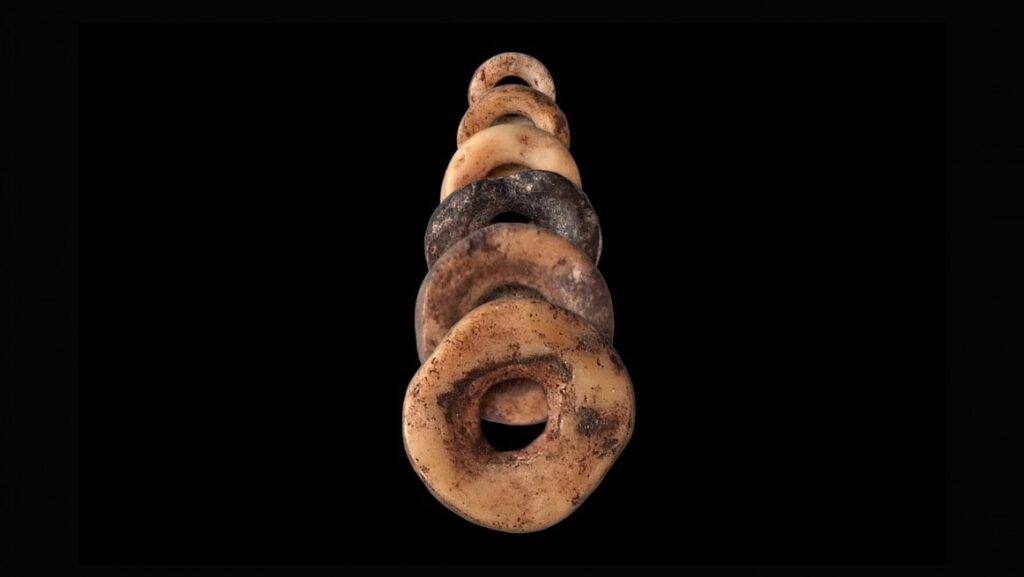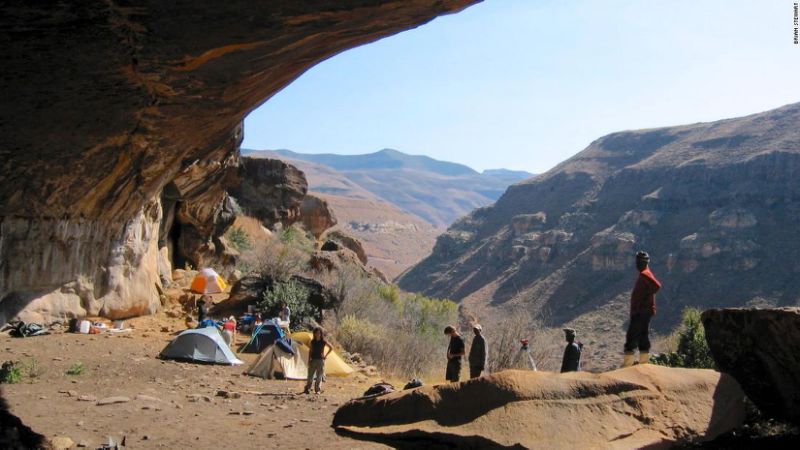Eggshell beads made by hunter-gatherers 33,000 years ago used as a social network
New U of T Scarborough research offers physical evidence that ancient hunter-gatherers were exchanging ostrich eggshell beads in order to form large-scale social networks.
The exchange of ostrich eggshell beads is thought to be the earliest example of social networking among humans. While it’s been theorized for decades this was the case, this study offers the first hard evidence supporting the claim.
“This is evidence of a very early social innovation humans were using to help adapt to their physical environment,” says Genevieve Dewar, associate professor in the department of anthropology and one of the authors of the research.
“The exchange of ostrich eggshell beads, some dating back to the late middle stone age, offers proof that humans were using cultural tools to develop these large networks in order to reduce the risk of living in harsher environments.”
Published in the Proceedings of the National Academy of Science (PNAS), the research looked at the archaeological evidence of ostrich eggshell beads in two sites within highland Lesotho in southern Africa.

Through isotopic analyses, Dewar and colleagues at the University of Michigan found that the practice stretched back at least 33,000 years ago, the age of the oldest beads found at the archeological sites.

The exchange of ostrich beads, which persists even today among hunter-gatherers in southern Africa’s the Kalahari Desert, is part of a system of delayed reciprocity known as Hxaro.
The purpose is to solidify relationships among groups, so if one suffers a lack of resources through drought or lack of food, they can rely on other groups living in areas of relative plenty.
“It’s a form of reciprocity that strengthens social bonds,” explains Dewar, an expert on the origins of modern human behaviour.
“If I give you a gift of an eggshell necklace, you are socially obliged to give me one in return. It works best if it’s not done right away, as it establishes a trading relationship between the two parties. Part of the social obligation includes allowing me to come and stay with you when my resources are low, and vice-versa.”
Through further isotopic analyses, the researchers found that beads were originating from at least 350 km, showing that this type of social networking was taking place on a large scale.
Since hunter-gatherers will forage up to 10 km per day looking for food, Dewar says committing so much time and resources to create a tool with no immediate practical purpose show how important the beads were to forging social bonds.

Ostrich eggshell was used by hunter-gatherers to make beads because it’s a fairly common raw material. In fact, the beads are found in archeological sites across southern Africa.
Dewar says it offers some clues into how Homo sapiens were able to leave Africa and essentially colonize the planet rapidly.
“Previous species, like Homo erectus, were able to leave Africa, but they didn’t adapt as successfully to very diverse environments as humans, so there are important innovations that allowed us to do this.”
She adds that anthropologists are trying to unpack these specific social innovations that humans used in order to move into areas of the world lacking in abundant resources.
“If you have a lifeline back to a place that you know is predictable and plentiful, then you are probably more willing to push on into the unknown.”





